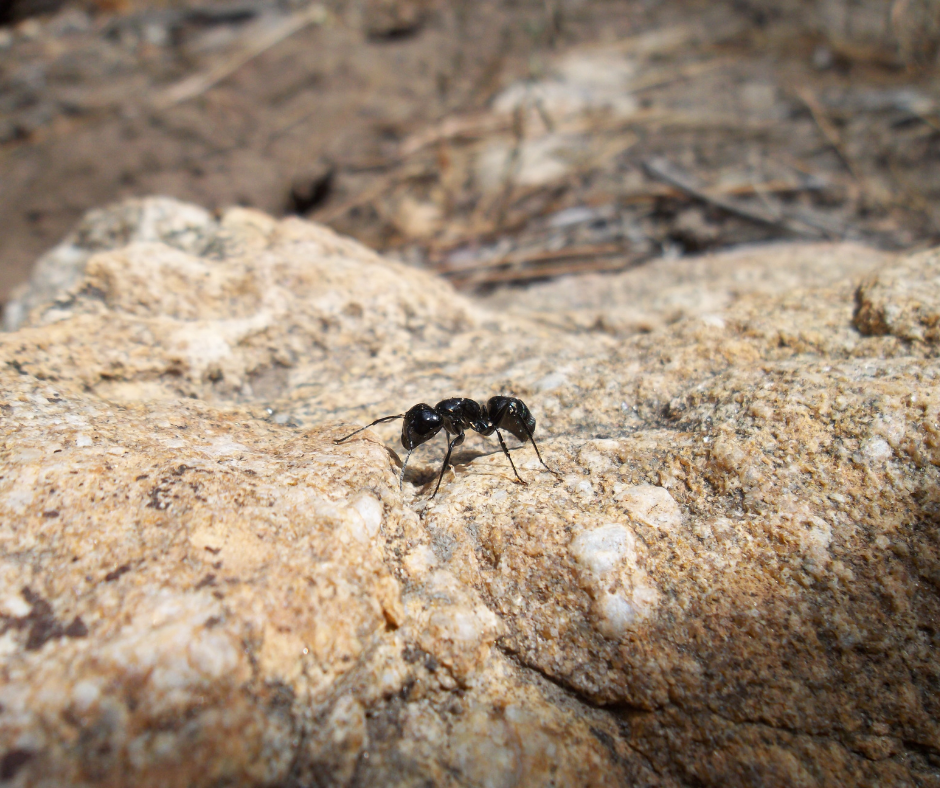What Are Carpenter Ants?
go.ncsu.edu/readext?856802
en Español / em Português
El inglés es el idioma de control de esta página. En la medida en que haya algún conflicto entre la traducción al inglés y la traducción, el inglés prevalece.
Al hacer clic en el enlace de traducción se activa un servicio de traducción gratuito para convertir la página al español. Al igual que con cualquier traducción por Internet, la conversión no es sensible al contexto y puede que no traduzca el texto en su significado original. NC State Extension no garantiza la exactitud del texto traducido. Por favor, tenga en cuenta que algunas aplicaciones y/o servicios pueden no funcionar como se espera cuando se traducen.
Português
Inglês é o idioma de controle desta página. Na medida que haja algum conflito entre o texto original em Inglês e a tradução, o Inglês prevalece.
Ao clicar no link de tradução, um serviço gratuito de tradução será ativado para converter a página para o Português. Como em qualquer tradução pela internet, a conversão não é sensivel ao contexto e pode não ocorrer a tradução para o significado orginal. O serviço de Extensão da Carolina do Norte (NC State Extension) não garante a exatidão do texto traduzido. Por favor, observe que algumas funções ou serviços podem não funcionar como esperado após a tradução.
English
English is the controlling language of this page. To the extent there is any conflict between the English text and the translation, English controls.
Clicking on the translation link activates a free translation service to convert the page to Spanish. As with any Internet translation, the conversion is not context-sensitive and may not translate the text to its original meaning. NC State Extension does not guarantee the accuracy of the translated text. Please note that some applications and/or services may not function as expected when translated.
Collapse ▲ There are several species of carpenter ants in North Carolina, but the black carpenter ant is the one most commonly found in homes. Because these are social ants, there are several castes and they can range in size from ¼ to ¾ of an inch long. The pedicel (waist) is one segmented. Faint rings of golden hairs are on the abdomen. Winged females and the large workers of the colony have distinctly heart-shaped heads when viewed from above. All carpenter ants have a thorax that is convex in profile.
There are several species of carpenter ants in North Carolina, but the black carpenter ant is the one most commonly found in homes. Because these are social ants, there are several castes and they can range in size from ¼ to ¾ of an inch long. The pedicel (waist) is one segmented. Faint rings of golden hairs are on the abdomen. Winged females and the large workers of the colony have distinctly heart-shaped heads when viewed from above. All carpenter ants have a thorax that is convex in profile.
Carpenter ants are well-known pests of structural wood, but they also can damage turf and ornamentals. Large colonies forage through lawns and clear trails through the turf. Also, these ants contribute to damage or death of plants by keeping aphids. Honeydew is an important part of the carpenter ant diet. Workers tend aphids on the leaves or roots of plants. The ants protect the aphids from enemies and stimulate their honeydew production, which causes increased feeding by the aphids on the host plants.
Also, colonies of carpenter ants invade vulnerable sites in plants, such as wounds and scars. Some researchers believe they attack entirely sound wood. It has not been proven that carpenter ants can kill a tree simply by chewing out areas, but carpenter ant galleries in trees do leave branches and trunks more susceptible to wind damage. To prevent carpenter ant problems in trees or shrubs, guard against moisture damage, repair wounds, and treat aphid infestations.
Carpenter ants often wander indoors searching for meat, sweets, and other foods. This does not necessarily indicate a structural infestation, although it may indicate an infestation on your property. However, the presence of foraging carpenter ants indoors very early in the year (January through March) is an
indication of a structural infestation. Colonies inhabiting heated structures emerge from hibernation earlier than colonies in natural structures. If a structural infestation is suspected, contact a professional pest control service for an inspection of your house and property.
To learn more about carpenter ants visit the NC State Extension page on Biology and Control of Carpenter Ants.




